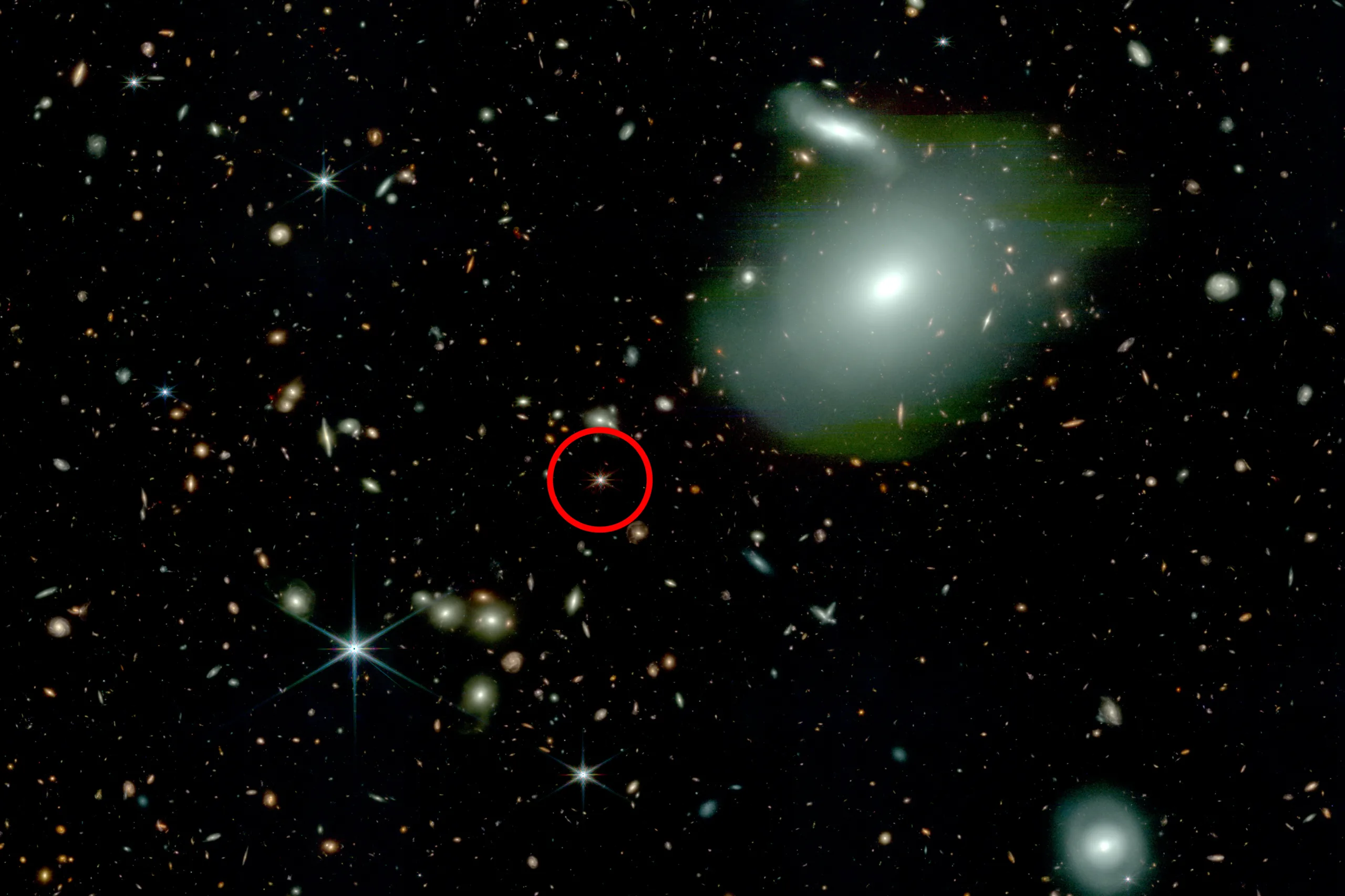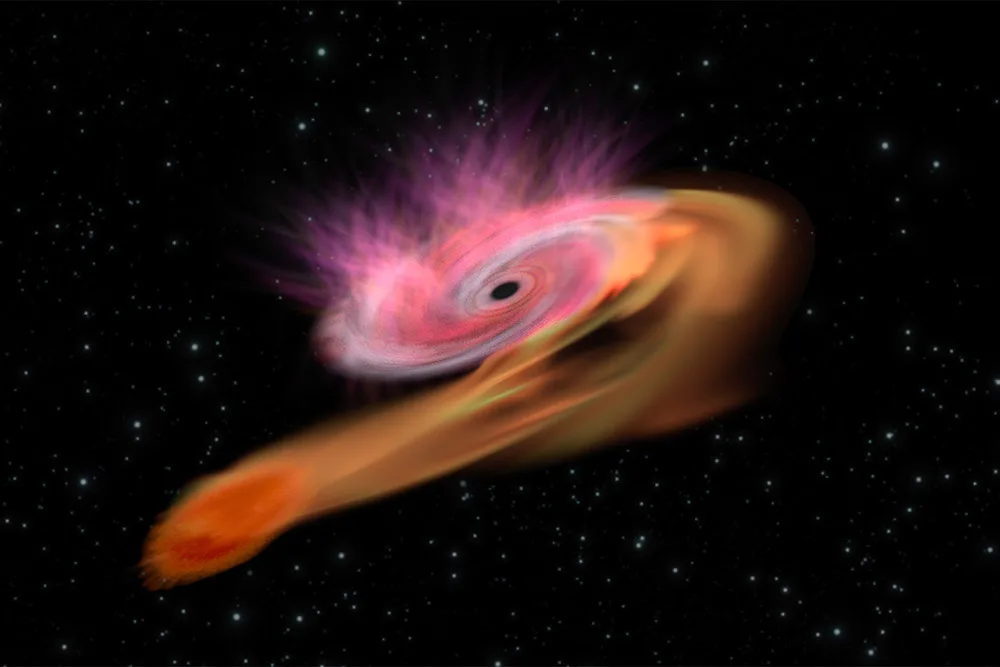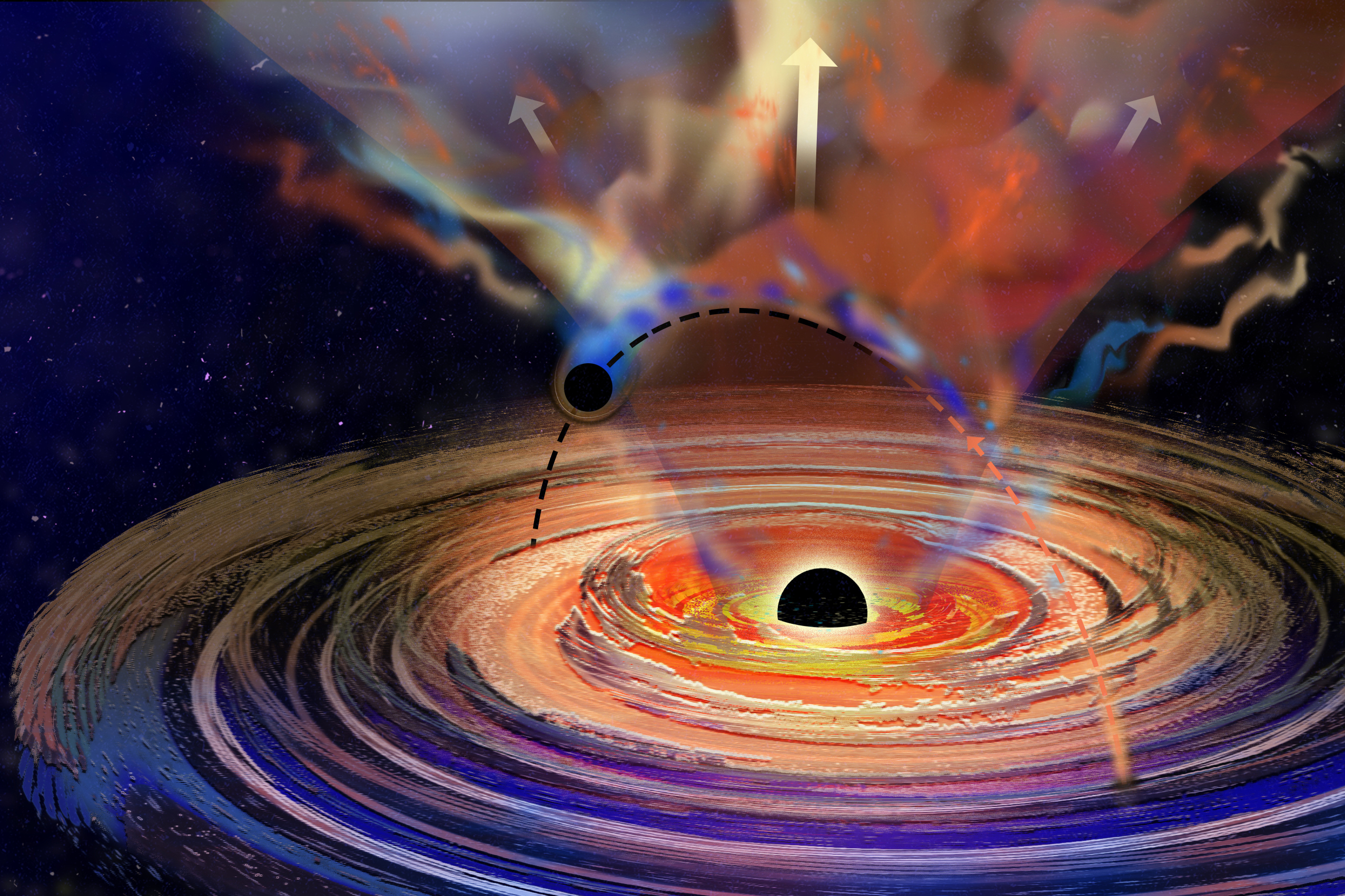Quasars are incredibly luminous cores of distant galaxies, powered by supermassive black holes that are actively consuming surrounding gas and dust. This process releases an astounding amount of energy, making quasars some of the most brilliant objects in the cosmos. Remarkably, these phenomena have been detected just a few hundred million years following the Big Bang, sparking questions about how they achieved such immense brightness and mass in such a brief period of cosmic history.
Previous theories suggested that these early quasars originated in densely populated regions of primordial matter that also formed numerous smaller galaxies nearby. However, a recent study led by MIT astronomers reveals an unexpected finding: some ancient quasars seem to exist in isolation within the early universe.
Utilizing NASA’s James Webb Space Telescope (JWST), the team examined the cosmic surroundings of five ancient quasars by looking back more than 13 billion years in time. Their results showed an astonishing diversity in these quasar neighborhoods, termed “quasar fields.” While certain quasars are found amidst clusters of over 50 neighboring galaxies, others appear to drift through nearly empty voids, hosting only a few solitary galaxies.
These solitary quasars present a challenge to current astrophysical models. “Our findings suggest that, on average, these quasars do not occupy the highest-density regions of the early universe. Some seem to be situated in almost deserted spaces,” explains Anna-Christina Eilers, assistant professor of physics at MIT. “This raises the question of how these quasars could have grown so massive without a substantial source of material to fuel their black hole growth.”
It’s possible that these seemingly solitary quasars are surrounded by galaxies cloaked in dust, making them invisible to current observation methods. Eilers and her team aim to refine their observations, hoping to penetrate this cosmic dust and unveil the mechanisms that allowed quasars to become so massive so quickly in the nascent universe.
The research findings are discussed in a paper published in the Astrophysical Journal. The MIT team includes postdocs Rohan Naidu and Minghao Yue, along with Robert Simcoe, the Francis Friedman Professor of Physics and director of MIT’s Kavli Institute for Astrophysics and Space Research, alongside collaborators from Leiden University, the University of California at Santa Barbara, ETH Zurich, and other institutions.
Understanding Quasar Environments
The five quasars examined in this study rank among the most ancient ever observed, exceeding 13 billion years in age. They are believed to have emerged between 600 and 700 million years after the Big Bang, each powered by supermassive black holes that are a billion times more massive than our sun and over a trillion times brighter. Remarkably, the light emitted by these quasars has traveled across the vast expanse of time, allowing observational data to reach JWST’s advanced detectors today.
The team analyzed a series of images of the five ancient quasars taken by JWST between August 2022 and June 2023. Each quasar’s observational data comprised a series of “mosaic” images, collaboratively pieced together to construct a comprehensive view of each quasar’s surroundings.
The telescope recorded light measurements across several wavelengths for each quasar’s field, facilitating the determination of whether individual objects in the vicinity were neighboring galaxies and measuring their distances relative to the more radiant central quasar.
“The key observation here is that the environments of these five quasars differ significantly,” notes Eilers. “One quasar hosts nearly 50 galaxies, while another harbors merely two. Yet both quasars share similar size, brightness, and temporal characteristics within the universe. That was an unexpected discovery.”
Revising Theories of Growth
The differing environments of these quasars introduce complexities to the prevailing theories of black hole growth and galaxy formation. Current astrophysical models suggest that a cosmic web of dark matter formed immediately after the Big Bang, guiding the assembly of gas and dust along its filaments. In mystical high-density regions, this matter should have coalesced to create more massive objects. Consequently, it was generally believed that quasars, being the most luminous and massive artifacts of their time, would emerge from these dense areas, simultaneously producing smaller galaxies.
“The cosmic web of dark matter is a cornerstone of our cosmological model, accurately described using numerical simulations,” remarks co-author Elia Pizzati, a graduate student at Leiden University. “By contrasting our observations with these simulations, we can pinpoint the locations of quasars within the cosmic web.”
To reach their remarkable masses and brightness in the early universe, quasars would need to sustain extraordinarily high accretion rates. “Our main inquiry is how these billion-solar-mass black holes emerged when the universe was still in its formative stages,” Eilers explains.
These findings may pose more questions than answers. The “lonely” quasars reside in relatively vacant regions of space. If existing cosmological models hold, these settings imply a scarcity of dark matter or starting materials for star and galaxy formation. So what allows these extraordinarily bright quasars to exist?
“Our results indicate that we might be overlooking a key element in understanding how supermassive black holes evolve,” Eilers concludes. “If these quasars lack sufficient surrounding material for continuous growth, alternative mechanisms must exist that have yet to be discovered.”
This research was partially supported by the European Research Council.
Photo credit & article inspired by: Massachusetts Institute of Technology



